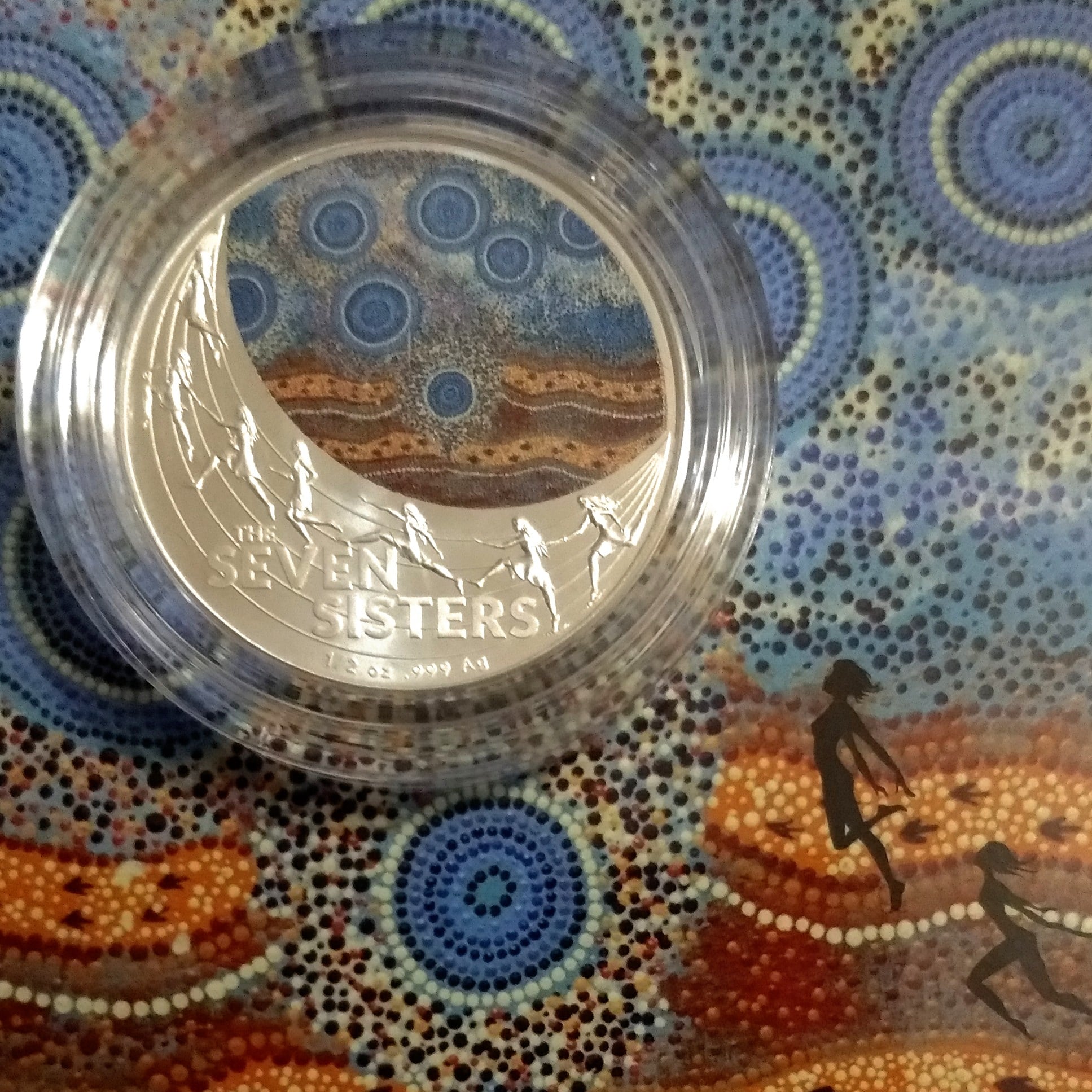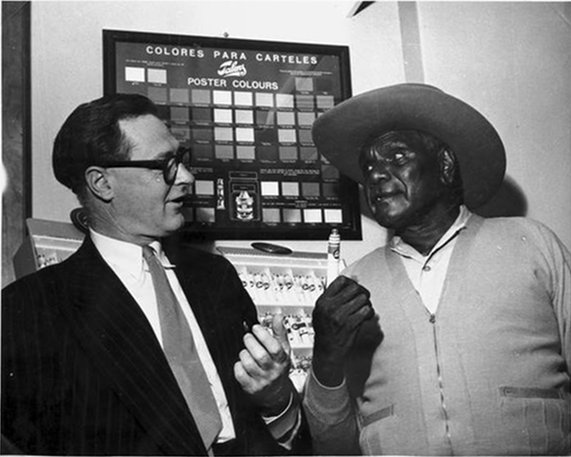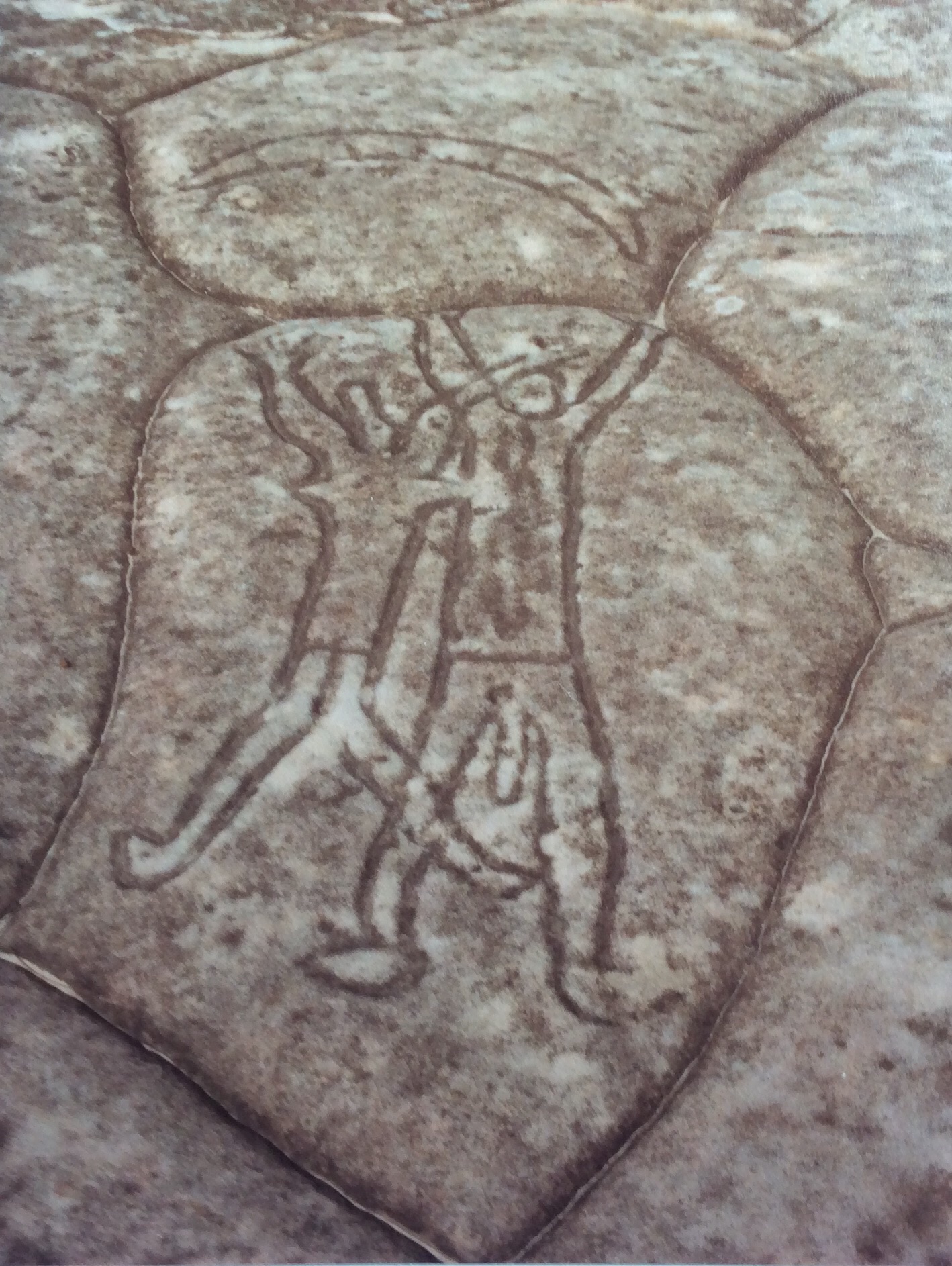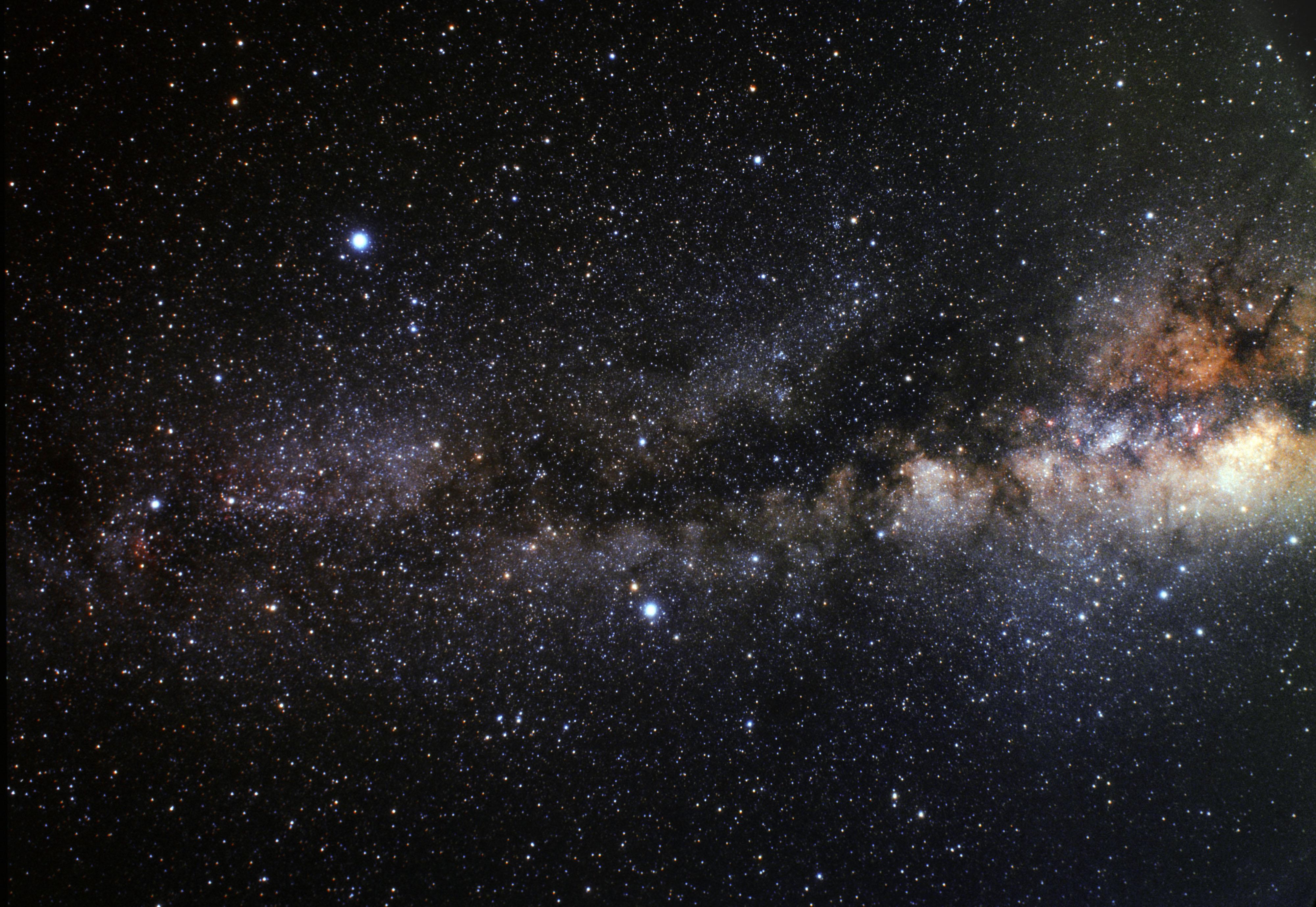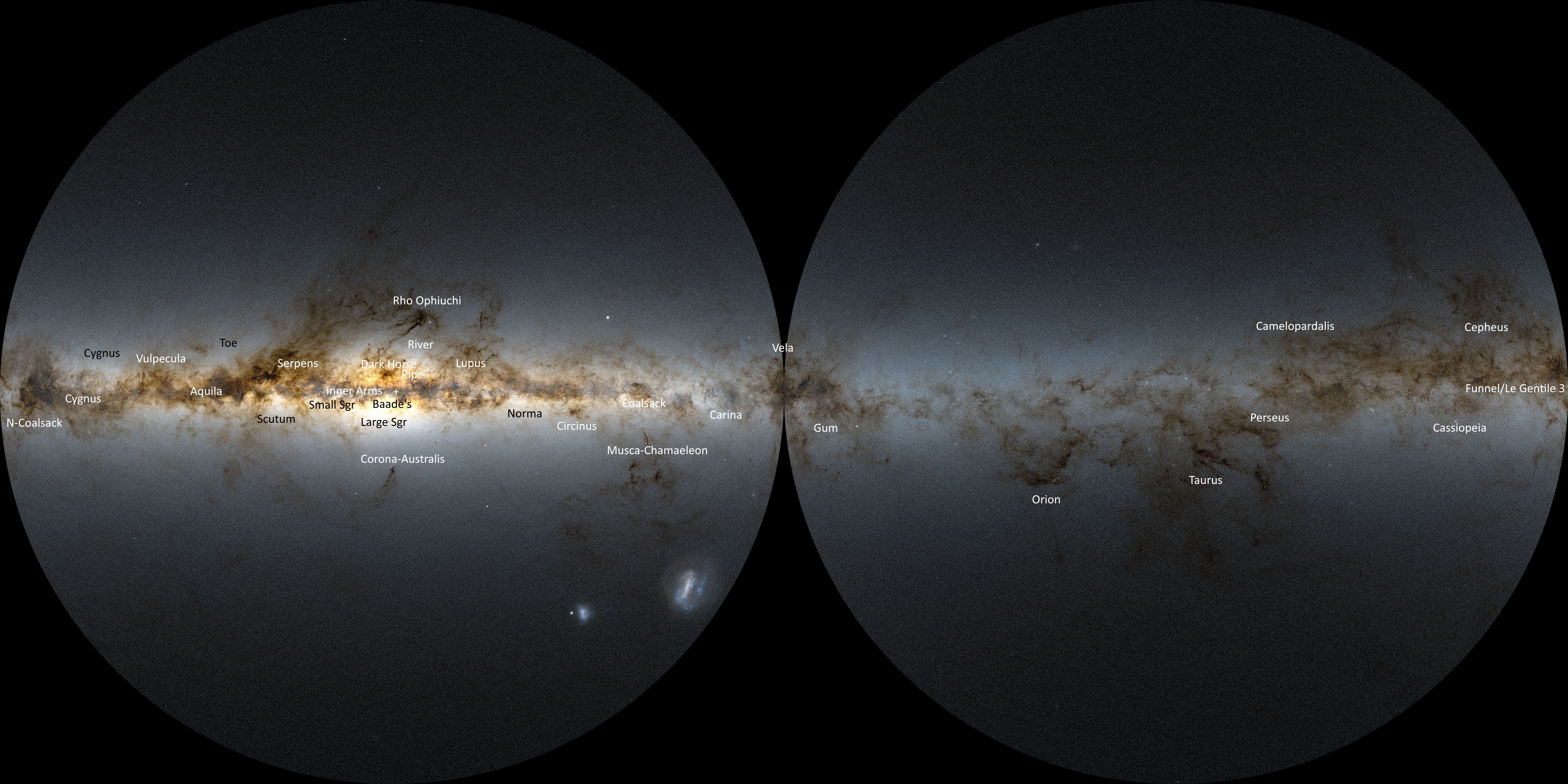|
Aboriginal Astronomy
Australian Aboriginal astronomy is a name given to Aboriginal Australian culture relating to astronomical subjects – such as the Sun and Moon, the stars, planets, and the Milky Way, and their motions on the sky. Traditional Aboriginal culture and mythology and religion include many components of astronomy, and these traditions have been passed down orally, through ceremonies, and in their artwork of many kinds. The astronomical systems passed down thus show a depth of understanding of the movement of celestial objects which allowed them to use them as a practical means for creating calendars and for navigating across the continent and waters of Australia. There is a diversity of astronomical traditions in Australia, each with its own particular expression of cosmology. However, there appear to be common themes and systems between the groups. Due to the long history of Australian Aboriginal astronomy, the Aboriginal peoples have been described as "world's first astron ... [...More Info...] [...Related Items...] OR: [Wikipedia] [Google] [Baidu] |
Aboriginal Australian
Aboriginal Australians are the various Indigenous peoples of the Mainland Australia, Australian mainland and many of its islands, such as Tasmania, Fraser Island, Hinchinbrook Island, the Tiwi Islands, and Groote Eylandt, but excluding the Torres Strait Islands. The term Indigenous Australians refers to Aboriginal Australians and Torres Strait Islanders collectively. It is generally used when both groups are included in the topic being addressed. Torres Strait Islanders are ethnically and culturally distinct, despite extensive cultural exchange with some of the Aboriginal groups. The Torres Strait Islands are mostly part of Queensland but have a Torres Strait Regional Authority, separate governmental status. Aboriginal Australians comprise List of Aboriginal Australian group names, many distinct peoples who have developed across Australia for over 50,000 years. These peoples have a broadly shared, though complex, genetic history, but only in the last 200 years have they been ... [...More Info...] [...Related Items...] OR: [Wikipedia] [Google] [Baidu] |
Contemporary Indigenous Australian Art
Contemporary Indigenous Australian art (also known as contemporary Aboriginal Australian art) is the modern art work produced by Indigenous Australians, that is, Aboriginal Australians and Torres Strait Islander people. It is generally regarded as beginning in 1971 with a painting movement that started at Papunya, northwest of Alice Springs, Northern Territory, involving Aboriginal artists such as Clifford Possum Tjapaltjarri and Kaapa Tjampitjinpa, and facilitated by white Australian teacher and art worker Geoffrey Bardon. The movement spawned widespread interest across rural and remote Aboriginal Australia in creating art, while contemporary Indigenous art of a different nature also emerged in urban centres; together they have become central to Australian art. Indigenous art centres have fostered the emergence of the contemporary art movement, and as of 2010 were estimated to represent over 5000 artists, mostly in Australia's north and west. Contemporary Indigenous artist ... [...More Info...] [...Related Items...] OR: [Wikipedia] [Google] [Baidu] |
Wardaman People
The Wardaman people are a small group of Aboriginal Australians living about South-West of Katherine, on Menngen Aboriginal Land Trust in the Northern Territory of Australia. Language Wardaman is a non Pama-Nyungan language. Though close to being a moribund language, it was, as late as the early 1990s, one of the most widely spoken Aboriginal languages in Katherine, with an estimated 30 speakers and perhaps 200 or more people who could understand it if spoken. Country The Wardaman controlled, according to Norman Tindale, some of territory from the headwaters of the southern branches of the upper Flora River, and westwards as far as the Victoria River Depot, Their southern limits lay around Jasper Gorge. The Wardaman presence, attested in post-contact times, at Delamere is historically recent. History of contact European contact with Wardaman and related peoples like the Dagoman and Yangman, was characterized from the outset by considerable violence. Eventually, as thei ... [...More Info...] [...Related Items...] OR: [Wikipedia] [Google] [Baidu] |
Daramulan
In Aboriginal cultures of south-east Australia, Daramulum (variations: Darhumulan, Daramulan, Dhurramoolun or Dharramaalan) (“one legged”, from dharra 'leg, thigh' + maal 'one' + -an suffix) is a sky hero associated with Baiame, and an emu-wife. He is a shapeshifter. Engravings of Daramulum are sometimes accompanied by indentations that may represent star groups. Daramulum is depicted on rock art off Elvina Track in Ku-ring-gai Chase National Park, near to a carving of his emu-wife. He is depicted in semi-profile, with one arm, an emu-back (i.e. pointed buttocks), and a large foot. His voice can be heard through the medium of the bullroarer which is whirled through the air during initiation ceremonies. He now lives in the trees of the bush, particularly in the burls or growths which are found on the trunks of trees, and only leaves them for initiation ceremonies. The bullroarer must be cut from a tree which contains his spirit for it to work. For the Guringai, Daramul ... [...More Info...] [...Related Items...] OR: [Wikipedia] [Google] [Baidu] |
Guringai
Kuringgai (also spelled Ku-ring-gai, Kuring-gai, Guringai, Kuriggai) (,) is an ethnonym referring to (a) an hypothesis regarding an aggregation of Indigenous Australian peoples occupying the territory between the southern borders of the Gamilaraay and the area around Sydney (b) perhaps an historical people with its own distinctive language, located in part of that territory, or (c) people of Aboriginal origin who identify themselves as descending from the original peoples denoted by (a) or (b) and who call themselves Guringai. Origins of the ethnonym In 1892, ethnologist John Fraser edited and republished the work of Lancelot Edward Threlkeld on the language of the Awabakal people, ''An Australian Grammar'', with lengthy additions. In his "Map of New South Wales as occupied by the native tribes" and text accompanying it, he deploys the term ''Kuringgai'' to refer to the people inhabiting a large stretch of the central coastline of New South Wales. He regarded the language desc ... [...More Info...] [...Related Items...] OR: [Wikipedia] [Google] [Baidu] |
Sydney Rock Engravings
Sydney rock engravings, or Sydney rock art, are a form of Australian Aboriginal rock art in the Sydney sandstone, sandstone around Sydney, New South Wales, Australia, that consist of carefully drawn images of people, animals, or symbols. Many thousands of such engravings are known to exist in the Sydney region, although the locations of most are not publicised to prevent damage by vandalism, and to retain their sanctity, as they are still regarded as sacred sites by Indigenous Australians. There are two art environments in Sydney Basin, rock shelters and engraving sites. There are 1,500 pieces of Aboriginal art in Sydney, more than half of which contain rock art, and around 1,500 caves or shelters which contain cultural deposit. They are comparable with the petroglyphs of Indigenous peoples of the Americas, Native Americans and the rock art found elsewhere in Australia, but have their own distinctive style which is quite unlike rock art found anywhere else in Australia. Dating to ... [...More Info...] [...Related Items...] OR: [Wikipedia] [Google] [Baidu] |
Ku-ring-gai Chase National Park
Ku-ring-gai Chase National Park is a national park on the northern side of Sydney in New South Wales, Australia. The park is north of the Sydney central business district and generally comprises the land east of the M1 Pacific Motorway, south of the Hawkesbury River, west of Pittwater and north of Mona Vale Road. It includes Barrenjoey Headland on the eastern side of Pittwater. Ku-ring-gai Chase is a popular tourist destination, known for its scenic setting on the Hawkesbury River and Pittwater, significant plant and animal communities, Aboriginal sites and European historic places. Picnic, boating, and fishing facilities can be found throughout the park. There are many walking tracks in Ku-ring-gai Chase. The villages of Cottage Point, Appletree Bay, Elvina Bay, Lovett Bay, Coasters Retreat, Great Mackerel Beach and Bobbin Head are located within the park boundaries. The park was declared in 1894, and is the third oldest national park in Australia. The park is man ... [...More Info...] [...Related Items...] OR: [Wikipedia] [Google] [Baidu] |
Scorpius
Scorpius is a zodiac constellation located in the Southern celestial hemisphere, where it sits near the center of the Milky Way, between Libra to the west and Sagittarius to the east. Scorpius is an ancient constellation that pre-dates the Greeks; it is one of the 48 constellations identified by the Greek astronomer Ptolemy in the second century. Its old astronomical symbol is (♏︎). Notable features Stars Scorpius contains many bright stars, including Antares (α Sco), "rival of Mars," so named because of its distinct reddish hue; β1 Sco (Graffias or Acrab), a triple star; δ Sco (Dschubba, "the forehead"); θ Sco ( Sargas, of unknown origin); ν Sco (Jabbah); ξ Sco; π Sco (Fang); σ Sco (Alniyat); and τ Sco (Paikauhale). Marking the tip of the scorpion's curved tail are λ Sco ( Shaula) and υ Sco (Lesath), whose names both mean "sting." Given their proximity to one another, λ Sco and υ Sco are sometimes referred to as the Cat's Eyes. The constella ... [...More Info...] [...Related Items...] OR: [Wikipedia] [Google] [Baidu] |
Great Rift (astronomy)
In astronomy, the Great Rift (sometimes called the Dark Rift or less commonly the Dark River) is a dark band caused by interstellar clouds of cosmic dust that significantly obscure ( extinguish) the center and most radial sectors of the Milky Way galaxy from Earth's perspective. In dark, clear night skies, the rift appears as clear as the bright bulge of stars around the Galactic Center does to the naked eye or binoculars. The rift is largely between the Solar System (which is close to the inner edge of the Orion Arm) and the next arm, inward, the Sagittarius Arm. The clouds are an obstruction to millions of the galaxy's stars detected at visible wavelengths, which compose a bright hazy band appearing 30° wide and arching through the night sky. The clouds within our radial sector of the galaxy span about from Earth. The clouds are estimated to contain about 1 million solar masses of plasma and dust. Properties To the naked eye, the Great Rift appears as a dark lane tha ... [...More Info...] [...Related Items...] OR: [Wikipedia] [Google] [Baidu] |
Southern Cross
Crux () is a constellation of the southern sky that is centred on four bright stars in a cross-shaped asterism commonly known as the Southern Cross. It lies on the southern end of the Milky Way's visible band. The name ''Crux'' is Latin for cross. Even though it is the smallest of all 88 modern constellations, Crux is among the most easily distinguished as its four main stars each have an apparent visual magnitude brighter than +2.8. It has attained a high level of cultural significance in many Southern Hemisphere states and nations. Blue-white α Crucis (Acrux) is the most southerly member of the constellation and, at magnitude 0.8, the brightest. The three other stars of the cross appear clockwise and in order of lessening magnitude: β Crucis (Mimosa), γ Crucis (Gacrux), and δ Crucis (Imai). ε Crucis (Ginan) also lies within the cross asterism. Many of these brighter stars are members of the Scorpius–Centaurus association, a large but loose group of hot blue-white ... [...More Info...] [...Related Items...] OR: [Wikipedia] [Google] [Baidu] |
Coalsack
The Coalsack Nebula (Southern Coalsack, or simply the Coalsack) is a prominent dark nebula in the skies, being easily visible to the naked eye as a dark patch obscuring a brief section of Milky Way stars as they cross their southernmost region of the sky, east of Acrux (Alpha Crucis) which is the bright, southern pointer star of the southern cross. It dominates and overspills the southeast corner of what is considered the extent of the constellation Crux at a little less than twice the distance of Acrux, away from Earth. General information The Coalsack Nebula covers nearly 7 ° by 5° and overlaps somewhat with the neighbor constellations Centaurus and Musca. The first observation was reported by Vicente Yáñez Pinzón in 1499. It was named "''il Canopo fosco''" (the dark Canopus) by Amerigo Vespucci and was also called "''Macula Magellani''" (Magellan's Spot) or "''Black Magellanic Cloud''" in opposition to the Magellanic Clouds. The Coalsack is omitted in most of today's s ... [...More Info...] [...Related Items...] OR: [Wikipedia] [Google] [Baidu] |
Dark Nebula
A dark nebula or absorption nebula is a type of interstellar cloud, particularly molecular clouds, that is so dense that it obscures the visible wavelengths of light from objects behind it, such as background stars and emission or reflection nebulae. The extinction of the light is caused by interstellar dust grains located in the coldest, densest parts of molecular clouds. Clusters and large complexes of dark nebulae are associated with Giant Molecular Clouds. Isolated small dark nebulae are called Bok globules. Like other interstellar dust or material, things it obscures are only visible using radio waves in radio astronomy or infrared in infrared astronomy. Dark clouds appear so because of sub-micrometre-sized dust particles, coated with frozen carbon monoxide and nitrogen, which effectively block the passage of light at visible wavelengths. Also present are molecular hydrogen, atomic helium, C18O (CO with oxygen as the 18O isotope), CS, NH3 (ammonia), H2CO (formaldehyde), c-C3 ... [...More Info...] [...Related Items...] OR: [Wikipedia] [Google] [Baidu] |
